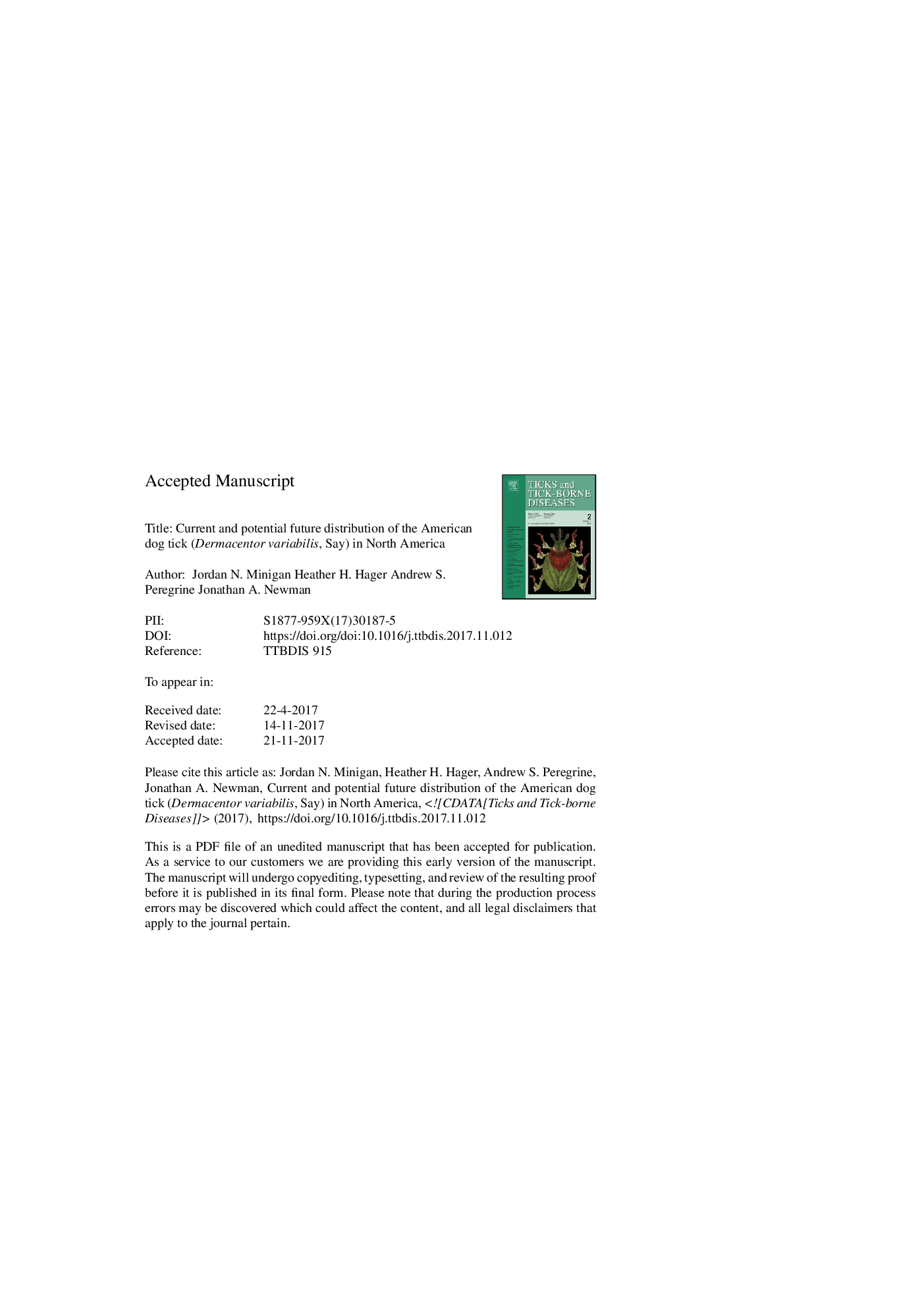| Article ID | Journal | Published Year | Pages | File Type |
|---|---|---|---|---|
| 8507527 | Ticks and Tick-borne Diseases | 2018 | 29 Pages |
Abstract
The American dog tick (Dermacentor variabilis) is medically and economically important in North America. This species is found across central and eastern North America from the Gulf Coast of Mexico through southern Canada. In parts of this region, D. variabilis is a vector for pathogens that cause diseases in humans and animals. Our aim was to determine whether climate change would affect the distribution of the climatically suitable area for D. variabilis in North America, to aid monitoring for potential future spread of tick-borne pathogens. We developed a species distribution model for D. variabilis to project where climate will likely be suitable for the tick in North America using a maximum entropy method, occurrence records from museum and laboratory archives, and 10 environmental variables relevant to climate requirements for the tick. We used four emissions scenarios from the Intergovernmental Panel on Climate Change's Fifth Assessment Report and 10 climate models from the Coupled Model Intercomparison Project (phase 5) to estimate potential future climate suitability and determine how the tick's distribution could change. Our consensus model projected that the area of suitable climate in North America could increase from present by approximately 50% by 2070. In areas beyond the current northern limit of D. variabilis, climate could become more suitable for the tick than at present, possibly resulting in a northward expansion in Canada, but the potential suitability of the southern range of D. variabilis could decrease, depending on the region and climate model. Due to the ability of D. variabilis to harbor and transmit pathogens, a change in the distribution of this species could also affect the risk of human and animal diseases throughout North America, particularly in the northern range of the tick.
Related Topics
Life Sciences
Agricultural and Biological Sciences
Animal Science and Zoology
Authors
Jordan N. Minigan, Heather A. Hager, Andrew S. Peregrine, Jonathan A. Newman,
